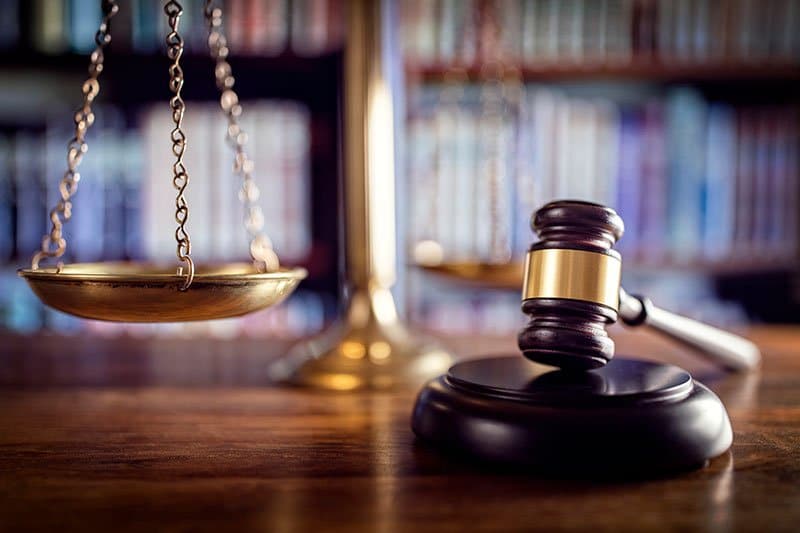Personal injuries can range from a simple fall to a life-changing accident. Either way, they negatively impact your work, family, and life. When a personal injury happens at the fault of someone else, you may need to file a personal injury claim to get the justice you deserve.
What is a Personal Injury Claim?
A personal injury claim is a case you file to enforce legal rights and gain compensation when you become a victim of an accident or a social wrong. If an individual suffers an on-the-job injury due to negligence or is the subject of defamation of character, that person can file a personal injury claim to ensure legal action is put into motion.
Certain details go along with a personal injury case. These details can help you better understand the process you are stepping into.
Statutory Limitations
Certain states have various timelines associated with filing a claim called statutory limitations. In Texas, this limit is within two years of an incident. The time limit varies across state lines.
Because of these limits, it is vital that a victim acts quickly on a case to avoid missing out on compensation due to timeliness.
Liability
Another element that personal injury lawsuits take into consideration is the idea of liability. While you may have been injured on the job or in an accident, a jury must decide in any part of the incident was your fault. Whether you are partially or wholly at fault for the injury or accident, a jury and judge must acknowledge that.
If you are found to be at fault at all, you may lose out on some compensation. In some cases, even partial fault can cause you to become ineligible for any kind of compensation. Liability is another important factor to think about when entering a personal injury claim.
Burden of Proof
While personal injury cases are not treated quite as intensely as criminal cases, the plaintiff or the injured party must show substantial evidence that their injury was a result of negligence on the defendants part.
If the plaintiff cannot produce any kind of proof or evidence, its difficult for the court to side with them. Certain evidence can help an injured individual receive the compensation they need.
Whether your claim is due to a defective product, a motor vehicle accident, or professional malpractice, there are a few main points of negligence that you, as a plaintiff, need to prove. They are:
- The party at fault owed a duty of care
- The defendant failed to meet their duty of care towards you
- The actions of the party at fault directly caused your losses/injuries
- The party at fault’s actions caused damage
The above statements outline the basic idea that everyone is obligated to do everything within their power to avoid accidents. This idea goes for employers, managers, co-workers, other drivers, manufacturers, and CEOs alike.

What is a Personal Injury Attorney?
A personal injury attorney is referred to as a kind of civil litigator, due to the fact that they provide legal representation within civil lawsuits. These types of lawyers specialize in helping plaintiffs who have allegedly suffered physical or psychological injuries at the fault of negligence or carelessness.
A personal injury attorney works within what is called tort law. Tort law covers all legal matters within private or civil affairs and details more than just physical injuries. In fact, personal injury lawyers deal with things like defamation of character and breach of contract.
Through a personal injury case, an attorney will guide their clients towards receiving compensation for their losses. Losses cover anything from loss of income and the inability to work to medical bills and emotional distress.
In addition to assisting plaintiffs in receiving their rightful compensation, a personal injury lawyer will also protect their clients from becoming victims of insurance companies or even the legal system. While these entities can easily outwit a plaintiff, a well-educated attorney knows the ins and outs of their structures.
Your attorney will handle your entire case from its start to its finish. Throughout the process of the case, they will investigate the claim, gather evidence, form their legal theories, and perform various levels of legal research.
After all of the trial preparation, personal injury attorneys continue to help their clients through trial proceedings. They advocate on their clients behalf and depose witnesses, additionally counseling them and tackling any curveballs along the way.
Educational Background
Your personal injury attorney can make or break your chances of receiving the compensation you deserve. Thats why it is important to know what kind of education they are required to have as practicing lawyers. Knowing this background may help ease your mind; your attorney is well-prepared.
First, your lawyer will have earned a four-year bachelors degree from a college or a university. Their bachelors degree serves as a prerequisite to any law school. Students are not required to major in any one specific area for their undergraduate degree, although they can major in pre-law or political science if they’re looking to get a jump-start.
Many students like to major in something that will help them towards their ideal area of law. For example, if you are interested in pursuing business law, you might major in business.
From undergraduate, your lawyer went on to take the Law School Admission Test or LSAT. It is required that everyone takes and passes the LSAT before they can apply to law schools. Think of it as the SATs for undergrad.
Once they got into law school, your lawyer worked hard to learn their expertise in law and earned their American Bar Association approval as well as their juris doctorate or J.D. From there, they passed the bar exam and possibly an ethics exam. It’s highly likely that your lawyer also held various internships and externships where they practiced their skills in real-life settings.
As you can see, your personal injury attorney has worked long and hard to get to their current position today. Therefore, it should be with great confidence that you trust them to handle your claim.
Types of Personal Injury Cases
There are several sub-sectors to personal injury lawsuits. The varying degrees of cases makes it necessary to divide them by name, where lawyers can specialize and take on the types of cases in which they best perform. Let’s take a look at some of the most common personal injury case types.

Car Accidents
Car accidents are likely the most common personal injury cases that occur in the United States, and they are usually due to some form of negligence. Negligence in a car accident can be a result of drunk driving, speeding, disobeying traffic signs, or just plain carelessness.
Should you retain injuries especially serious injuries, as some states specify the negligence of the other participant can be cause for compensation.
Slip and Fall Cases
Slip and fall injury cases are very common ones. Property owners are held to certain standards to keep their property safe and hazards free for residents, visitors, guests, employees, and customers.
Slip and fall injury claims will vary depending on state laws and specific premise liability laws. Many times, a landowner has done everything right in terms of safety and slip and falls are ruled to be the fault of the plaintiff.
However, if a landowner fails to keep up with land maintenance or other safety concerns, they could face liability claims against them should their negligence result in personal injury.
Dog Bites
While the specifics of this law vary from state to state, most dog bite cases are deemed to be the fault of the dog owner. When someone’s dog attacks and bites someone else, the owner becomes legally responsible for the injuries caused.
Some states hold strict laws that hold owners responsible even if their dog has never shown any signs of aggression and holds no former incidents. Other states will enact the one bite rule, which allows owners the chance to determine whether their dog is aggressive or prone to biting. Should their dog attack again after this first incident, they will be held responsible.
Assault and Battery
Though these types of cases are generally considered criminal or at least involve aspects of criminal charges, plaintiffs can additionally file a personal injury claim to receive compensation for injuries. In this case, not only will the defendant face criminal charges, but they will likely own monetary compensation for the injuries they caused with intent.
Personal Injury Case Examples
It is certainly important to know the different types of personal injury cases; however, it can be difficult to visualize exactly what each other these instances can look like. These examples can help you better understand each of the personal injury case types.
Car Accidents
This first personal injury accident is fairly straight-forward; however, it can still help to have a specific visual.
Think about your commute to work. You are already driving on a busy road packed with businessmen and women struggling to get to their offices on time. Now imagine amidst this chaotic mess, a woman is texting on her phone.
Because of her carelessness and distraction, along with her utter disrespect for the law, she doesn’t see the car stopped in front of her, and she rams into it full-speed. The owner of the vehicle she hit suffered a concussion along with other injuries that will keep them out of work for a significant amount of time. Not to mention, they no longer have a car to drive.
This is a clear case of negligence where another person has suffered.
Medical Malpractice
Another personal injury accident case, the consequences of medical malpractice can be as severe as permanent damage or even wrongful death. For example, a doctor goes in to examine a patient who has just come into the hospital. They determine that the patient needs emergency surgery.
Right before the surgery begins, the anesthesiology gives the wrong amount of anesthesia to the patient. The result of this large-scale mistake is permanent brain damage to the patient, who will now need constant care for the rest of his life.
Slip and Fall
As we already know, slip and fall personal injury accident cases are very common in civil court. A case like this could be as simple as someone slipping on a puddle in a grocery store after someone mopped.
It is required that stores utilize caution signs to alert customers of wet floors. In this instance, the employee who mopped failed to place the sign after he was finished. As a result, a customer slipped and suffered a broken arm.
In the same way, a landlord could be liable for not maintaining his property. If he fails to have a broken cement step fixed and someone falls on it and hurts themselves, they could have a legitimate case on their hands.

Personal Injury Lawsuits
Accident lawsuits most often refer to any type of automobile accident, like a car wreck or a motorcycle collision. In terms of personal injury, accident lawsuits occur when a wreck is the result of another driver’s negligence. A victim of this negligence is entitled to seek compensation and can do so through a personal injury attorney.
Compensation in an auto accident can come in several different forms. The offender may be liable to pay your medical expenses that were caused by the accident. They also could be held responsible for any wages that you were unable to work for because you were out of work due to your injuries. Some monetary settlements even address concerns of emotional implications and pain and suffering.
During an accident lawsuit, there are a few vital steps that the plaintiff must take in order to receive rightful compensation.
Submit the Claim
The first step is typically to submit the claim. While you can submit your claim to the other individual’s insurance company, there’s a good chance the insurance will try to take advantage of you and your lack of legal knowledge. This is why it’s a good idea to find yourself a good personal injury attorney who can negotiate on your behalf.
Once you file a personal injury claim with the other driver’s insurance company, the company will conduct a thorough investigation of the accident that occurred. The insurance claims adjuster will review all of the evidence that you give them, such as police report, photos, medical records, witness statements, and drivers’ testimonies.
Consult with Experts
Your lawyer will likely suggest that you obtain statements or documents from experts related to the incident. For example, you can get a professional opinion of your injuries sustained during the accident from your doctor. They can discuss your injuries, treatments, and prognosis.
You can also look into an accident reconstruction specialist. This professional is trained to create a digital rendering of your accident and can identify what led to it.
Finally, a civil or mechanical engineer can give you a sound opinion on factors that may have led to the accident. They can determine vehicle malfunctions, geographical features, or areas of incomplete roads or construction.
Seek a Pre-Lawsuit Settlement
A lot of car accidents are able to be settled without actually going to court. Through the above steps and with the guidance of your lawyer, you can determine whether the negligent driver’s insurance company’s offer is good enough.
Your lawyer will be able to tell you if what they’re offering is fair. If it is, you simply accept the settlement and move on. If your lawyer determines that what they’re offering is not sufficient compensation, then they will suggest taking the case to trial.
File a Lawsuit
If you and your lawyer find that you cannot come to a fair settlement, then you can file a car accident lawsuit. This lawsuit will take place either within the county where the accident happened or where the defendant resides.
Once you file a lawsuit, it is still possible to come to an agreement outside of the courtroom. Your attorney can still negotiate with the insurance provider, and sometimes the idea of a lawsuit is enough to loosen their purse strings.
However, if you do end up going to court, both sides will present their claims to the jury and provide witnesses and evidence. Once the judge reads the jury’s verdict, both parties have the option to accept or appeal.
How Much is a Personal Injury Case Worth?
Most people would love nothing more than to avoid a lawsuit, so if you find that you have suffered injury or personal harm due to the negligence of someone else, you may be stuck on the “is it worth it?” of it all.
Determining the worth of your personal injury case comes down to the value of the damages done. Of course, the damages done varies widely from case to case, so each instance has to be viewed as a separate, new case.
Here are some of the damages taken into consideration for a personal injury case:
- Medical treatment: a plaintiff took on significant injuries that required medical attention, and this a medical bill.
- Income Loss: due to the injuries sustained, a plaintiff cannot work for a significant amount of time and therefore, is not making a paycheck.
- Property Loss: the negligence of the offender caused you to lose or damage a vehicle, clothing, or other items.
- Pain and Suffering: your case resulted in significant pain or serious discomfort.
- Emotional Distress: the impact of personal injury led to fear, anxiety, sleep loss, depression, or other emotional damage.
- Loss of Enjoyment: injuries caused by the accident prevent you from enjoying hobbies, exercise, and other recreational activities.
- Loss of Consortium: the incident that occurred led to an impact on the relationship between you and your spouse or you and your children.
At the same time, your own participation in the situation can affect the amount of compensation you receive. This comes down to a few things.
This first is comparative negligence. If you are partially at fault at all in a case that caused your injuries, your compensation will surely reflect that. Contributory negligence is another decree followed by some states that prevent you from receiving any compensation at all if you are determined partially responsible.
You can also lessen your chances at compensation if you fail to mitigate the damages. For example, if you get into a car accident but fail to get the necessary medical treatment right away, thus leading to more serious conditions, your damage reward could be significantly lowered.
All of this being said, the average amount of compensation for personal injury lawsuits is about $52,000. However, settlement amounts and court awards usually range from $3,000 to $75,000. While these are the average numbers, some people have received much more than $75,000 while others have received less than $3,000.
We discussed the factors ahead of the numbers because, in truth, every case is different and will generate a different outcome. Although, it is overwhelmingly agreed that plaintiffs are much more likely to have a higher settlement with a lawyer present than without.
In fact, some lawsuits result in settlements of millions of dollars for things like wrongful death, brain injury, prisoner neglect, and job-site injuries.
How Much Does a Personal Injury Lawyer Cost?
There is no flat rate for how much it costs to hire a personal injury lawyer because most lawyers operate on the practice of contingency fees, along with other detailed agreements.
Contingency Fees
A contingency fee basically means that you only have to pay your attorney if you win the lawsuit. This kind of agreement prevents you from taking the risk of paying out of pocket only to have it not work out in your favor.
Most lawyers will charge 33.3% for a case settled without filing a lawsuit and 40% for a case where a lawsuit was filed. If you win the case, your attorney will receive that previously agreed-upon percentage of the settlement you were given, and the rest goes to you.
For example, if your lawsuit awards you $10,000, your lawyer would receive $3,330 of that while you pocket the rest.
However, you still have to consider other costs.
Costs
When it comes to legal issues, fees and costs are two separate things. The fees are what your attorney will charge you, but the costs have to do with any expenses paid by a law firm throughout their actions in your case. This includes investigations, negotiations, and obtaining additional witnesses or paperwork.
Depending on your specific agreement, you may have to repay the firm for some of these costs. Let’s use the previous example. You won $10,000 in your settlement. First, you subtract the costs. We’ll say $1,000. That brings you to $9,000. Now, take 33.3% of $9,000. Your lawyer now gets $3,000 while you walk away with $6,000.
Steps in a Personal Injury Case
Now that you have all of this vital information let’s break down the whole process into a few simple steps.
1. Consult with an Attorney
It can be hard to know exactly what to do after an accident, so the best first step you can take is to make a meeting with a reputable personal injury attorney. Discuss the details of your case to determine whether or not it’s worth pursuing. Your lawyer will be able to tell you that a much more, including the next steps.
2. Investigation
After you meet with your attorney, they will perform an investigation of your claim. They will look over details like police reports, photos, medical bills, and more. They will also talk to your doctor and other experts to gather supporting statements and evidence.
3. Demand Package
After a thorough investigation, you and your lawyer will produce your demand letter that details your desired compensation. The opposing party will review the letter and either reject it, make a counteroffer, or accept it.
4. File a Lawsuit
In an instance where you and your opposing party cannot come to an agreement on a demand package, your attorney may recommend a formal lawsuit. They will help you file one to seek compensation.
5. Discovery and Prep
In lieu of your impending trial, both your attorney and the opposing’s attorney will take time to obtain more evidence to support their claims. They will evaluate their competition and determine the best way to approach your case in front of a judge and a jury.
6. Mediation
Often times, before the trial happens, a mediator will oversee mediation between the two parties to try to avoid a formal trial one last time. This is similar to your original negotiations, except now it is more organized and supervised.
7. Trial
If mediation does not result in a settlement, the case will go to trial before a decision-maker (typically a jury). Lawyers will present their arguments, evidence, and witnesses, and the jury will vote on a decision.
8. Appeal
After the decision is made and the settlements are awarded, the losing side has the opportunity to appeal the case. Though this process can be difficult and elongates the process, the amount of the settlement may make it worth the effort.
Contact the Personal Injury Lawyers at Stoy Law Group
After a car wreck or a truck wreck, you will be faced with a number of decisions.
The car wreck lawyers at Stoy Law Group, PLLC are here to help.
Call us at (817) 820-0100 or submit a free case evaluation.
In the meantime, if you have questions, please visit our Car Wreck FAQs or read about what you should do after a wreck.













